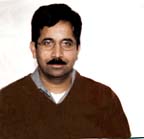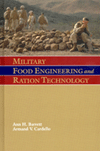
Among Naidu’s discoveries is the need to reduce or neutralize the net surface charge on lactoferrin molecules in order to enhance its growth- and adhesion-blocking effectiveness on biosurfaces. These lactoferrin molecules are particularly effective in preventing colonization by E. coli and dislodging pathogens already present on a food surface.
Naidu dubbed these specially treated molecules immobilized lactoferrin antimicrobial agents, more commonly known as activated lactoferrin (ALF). The initials became the core identification of aLF Ventures LLC, a joint venture of Naidu’s N Terminus Laboratory in Pomona, Calif.; DMV International, a Dutch firm that processes commercial lactoferrin; and Farmland National Beef, the nation’s third largest beef processor. aLF is marketing Activin, an immobilized lactoferrin delivery system for slaughter operations. Waiting in the wings is Nature Check, a spray that remains on ready-to-eat foods for continuous protection and extended shelf life.
Directing the commercialization process at aLF’s Salt Lake City headquarters is Ram Nimmagudda, vice president of operations. Nimmagudda joined the venture early this year from DMV International. He is a graduate of Mangloo University in India, where he received a doctorate in biochemistry, and was a post-doctoral fellow at Rutgers University and at a UK medical school. Food Engineering recently spoke with Nimmagudda about the immobilized lactoferrin process.

Nimmagudda: Lactoferrin in the body and in nature does not occur in an immobilized condition. It becomes iron saturated during processing and is much less likely to prevent pathogen attachment to a surface. By immobilizing lactoferrin on a biologically active substrate, undesirable cidal activity is eliminated and the N terminus of the molecule is able to bind to a grounded surface, in this case the beef carcass. The other end of the lactoferrin molecule serves as the C terminus, which binds with any bacteria present. This makes it extremely difficult for the fimbria of pathogens to attach to the meat surface. Colonization is blocked, and molecules with attached microbes can be washed off the meat’s surface.
FE: How does activated lactoferrin differ from other pathogen interventions, such as peroxyacetic acid and lactic acid?
Nimmagudda: Most interventions are chemical and cidal. This is a microbial blocking agent and the first application of medical microbiology to food protection. Once the fimbria of pathogens attach to a meat surface, the microbes are extremely difficult to remove. This intervention creates a competition for the surface area between the lactoferrin molecules and the microbes. The lactoferrin provides a blocking action. The molecules do not bind to the surface and can be easily washed off.
FE: Have any field tests been conducted on effectiveness?
Nimmagudda: We couldn’t test with E. coli in a plant, so we created a six-chamber machine that simulates existing intervention and compared results with and without lactoferrin on inoculated meat. In a 6-Log challenge involving E. coli, we very conservatively estimated a 5.2-Log reduction, with 2.5 Logs attributed to this process. We also went to Colorado State University for independent validation.
FE: How is the solution constituted?
Nimmagudda: A processor reconstitutes the lactoferrin by mixing it with deionized water and a carbohydrate substrate, such as collagen. If it can be done economically, heparan-sulfate is the best substrate. In dry storage form, immobilized lactoferrin is stable for six to 12 months. After it is reconstituted, it’s active for 48 hours at 40˚C.
FE: When would a processor apply this?
Nimmagudda:After evisceration and splitting of the carcass, sides of beef typically undergo thermal pasteurization and then a water rinse. We envision this occurring after thermal pasteurization and prior to the water rinse in a separate spray cabinet. The process takes four seconds. The concept is to augment existing interventions, not replace them.
FE: Why did you develop a spray application for the solution, rather than a rinse or a wash?
Nimmagudda: The shapes of the products are very irregular, which is why a rinse or wash was considered initially. But this also is a cost sensitive industry, which is why we developed a spray delivery system. The challenge our engineers were given was to devise a system that provides efficacy in a cost-effective manner. The goal was one gram of solution per carcass. Conventional hydraulic sprays use gallons of solution per minute. We devised an electrostatic wet spray that uses milliliters per minute.
FE: What were the engineering challenges?
Nimmagudda: Our engineers found a similar model in the paint industry, where electrostatic spray booths are used to wrap paint around objects of varying shapes and areas on an overhead conveyor. These systems use high voltages, and that is very dangerous in a wet industry like meat processing. Therefore we needed to develop a low voltage system that could still wrap around each side of beef and provide effective coverage with minimum volume.
We also needed a cost effective way to ground each side of beef. The solution is positive, and we needed to determine the best place on the carcass to attach an electrode to make it negative. We also needed a method to easily remove the electrode and attach it to the next carcass. It’s Coulomb’s Law: opposite charges attract, and the electrostatic charge enables the solution to adhere to the beef.
FE: When will beef treated with lactoferrin begin appearing in retail and foodservice?
Nimmagudda: The equipment already is installed at National Beef’s carcass processing facilities in Liberal and Dodge City, Kan. They’re just waiting for a USDA ruling on lactoferrin’s use as a process aid on beef carcasses, rather than an additive. Activated lactoferrin has GRAS status FDA, and it is our contention that labeling should not be required, though National Beef will present the carcass rinse as a food safety advantage to its customers. USDA is expected to act by September.
